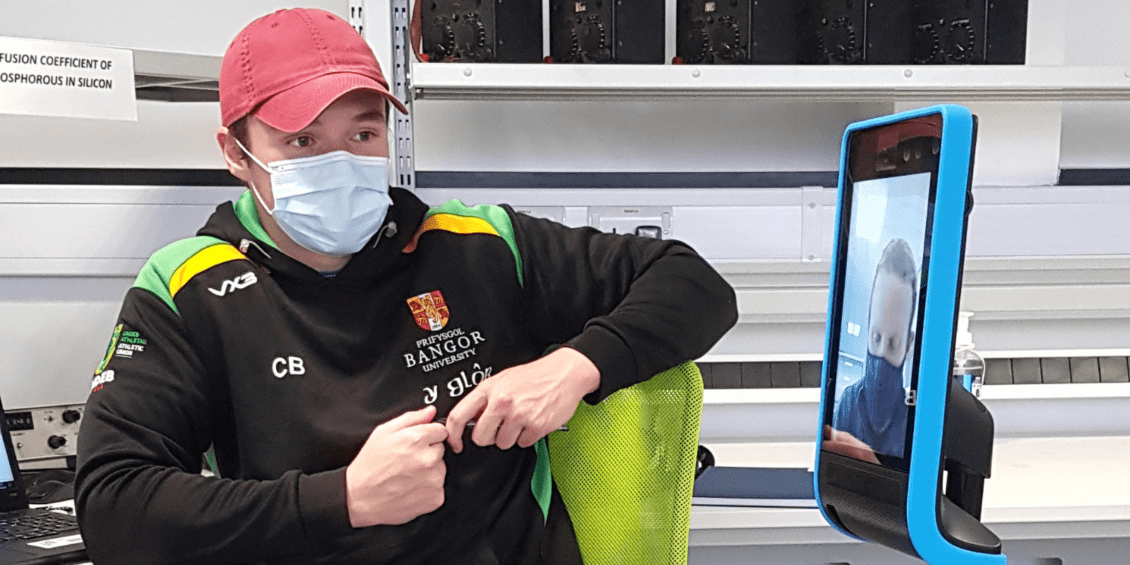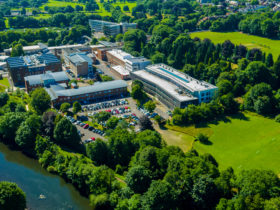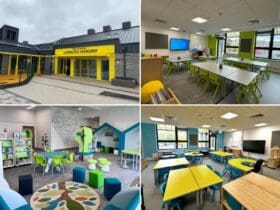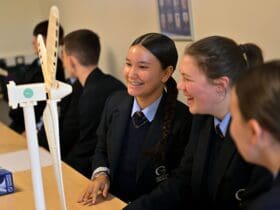Virtual presence at lectures and seminars through the use of telepresence robots are one option being trialled by academics at Bangor University’s School of Computer Science and Electronic Engineering as they explore cutting-edge methods of delivering teaching and learning during a global pandemic.
Telepresence robots are now widely used in industry, particularly when individuals managing projects from afar want to gain a real ‘feel’ for their environment such as for remote construction site visits or inspection of huge concert rigs.
But they are increasingly being used by educational institutions throughout the world, to allow learning to continue and a virtual presence when students cannot be physically present. This could be for many reasons, from distance to a need for shielding due to health reasons.
This isn’t the first time that Bangor’s led the way in the use and development of cutting-edge technology. The School of Computer Science and Electronic Engineering at Bangor was the first in the UK to offer degrees in Electronic Engineering, and is a leader in research in fields like virtual reality and machine learning.
Dr Iestyn Pierce, Head of the School of Computer Science and Electronic Engineering at Bangor University said, “Sometimes challenging situations also act as a catalyst for innovation and imagination. Augmented Reality and Digital to Real are very much part of what our student in Computer Science and Electronic Engineering are looking at, and what better way to see that working on a practical level than by giving them an opportunity to try out these robots. Certainly we’re using our shared passion for new technology as a means of exploring different ways of delivering the very best teaching and learning for students.”
Cameras, microphones and an array of Artificially Intelligent sensors allow the ‘driver’ to safely navigate around permitted areas, whilst a large screen means the individual’s own face can be viewed by those around them.
A pilot project by the team at Bangor’s School of Computer Science and Electronic Engineering could see some students getting the chance to try out the department’s telepresence robots at practical sessions and seminars.
Dr David Perkins, Director of teaching and learning and senior lecturer in the School of Computer Science and Electronic Engineering at Bangor University said, “As the use of this type of Technology increases, it’s important that we trial different ways of creating a learning environment. Our aim is to give some students on computer science and electronic engineering courses the opportunity to try out the robots, and see how it goes. It takes a bit of getting used to, but it’s surprising how different it feels to be in a room via a telerobot rather than Zoom or Teams. Having that freedom to look around, and for a lecturer to speak directly with you makes the whole experience much more immersive.”








Leave a Reply
View Comments